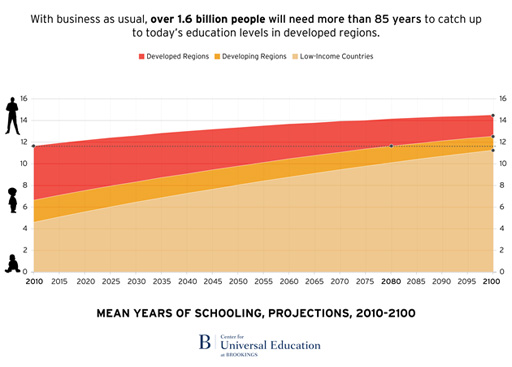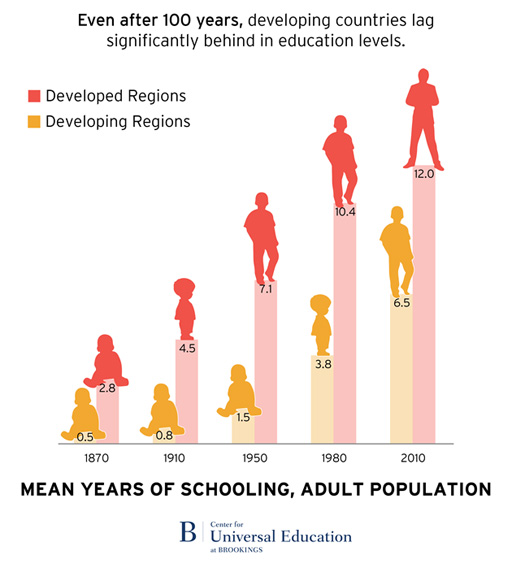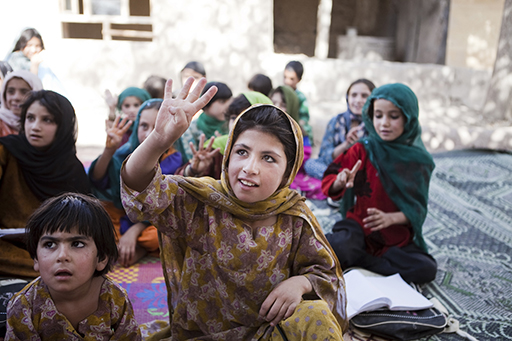4.4 Educational inequalities
The UN’s Sustainable Development Goals are 17 global goals to be achieved by 2030. They build on the Millennium Development Goals set out at the stat of the millennium.. The goals include the reduction of poverty and hunger, climate action, worldwide clean water and sanitation, sustainable economic growth and universal access to quality education. Each has measurable targets and detailed reports are published annually. As a result of the Millennium Development Goal to ‘achieve universal primary education’, the number of children attending primary school has increased. Now 90 per cent of the world’s children are enrolled in primary school.
Despite these achievements, educational inequalities between the developed and developing worlds remain. The gap is noticeable in average levels of attainment, how much children have learned and how long they have spent in school.
In an article, Rebecca Winthrop, Director for the Center for Universal Education at the Brookings Institute, explains that in developed countries the education levels of the adult workforce – often measured by average numbers of years of school – is nearly double that of their developing country peers.

In developed countries, adults have an average of 12 years of school, compared with 6.5 years of school for those in developing countries. This shows that these poorer countries still have average levels of education in the 21st century that were achieved in many western countries by the early decades of the 20th century. The developing world is about 100 years behind developed countries.

The gap is somewhat historical as mass schooling only spread across the developing world after the 1948 Universal Declaration of Human Rights. This came roughly 100 years after the idea that all young people should have an opportunity to be educated had spread across Europe and North America. Despite this, developing countries still lag significantly behind and the gap is not expected to close anytime soon.
Next, you will find out more about how inequality is measured.

